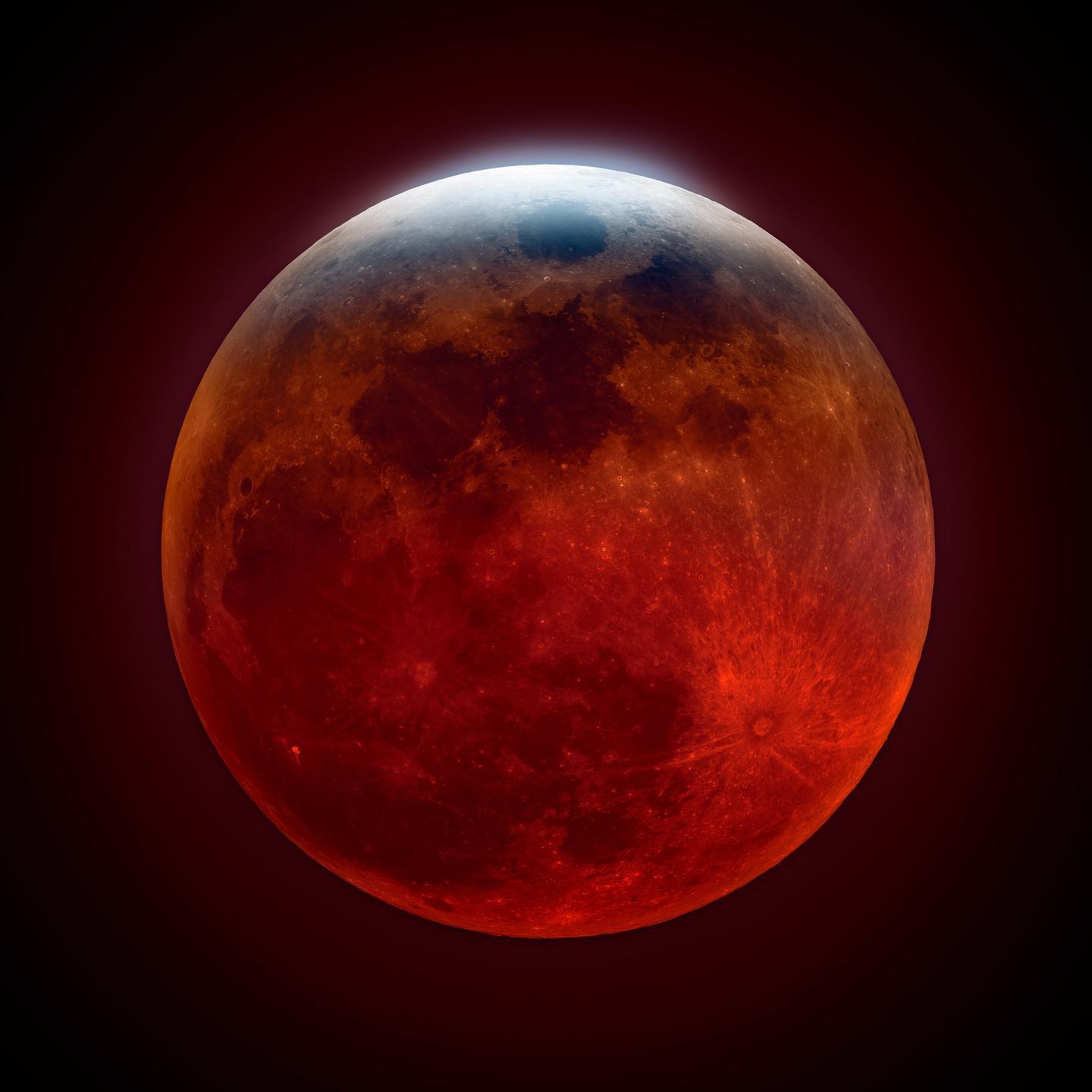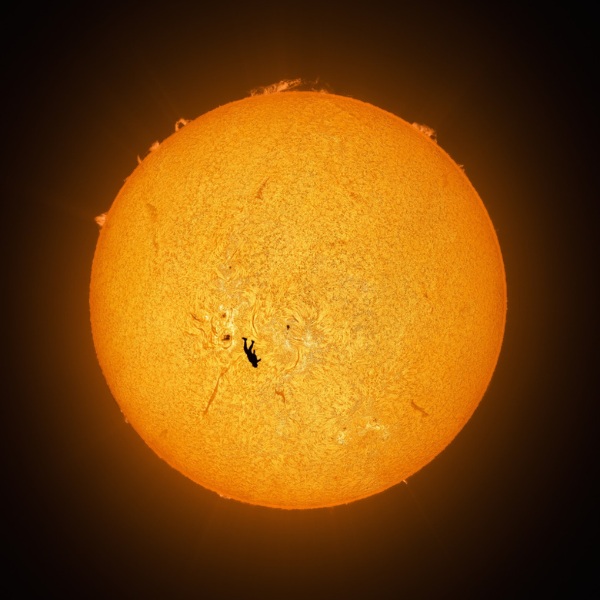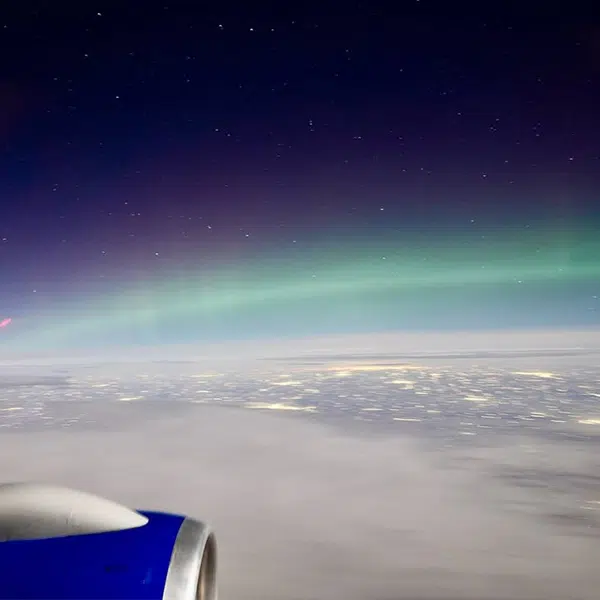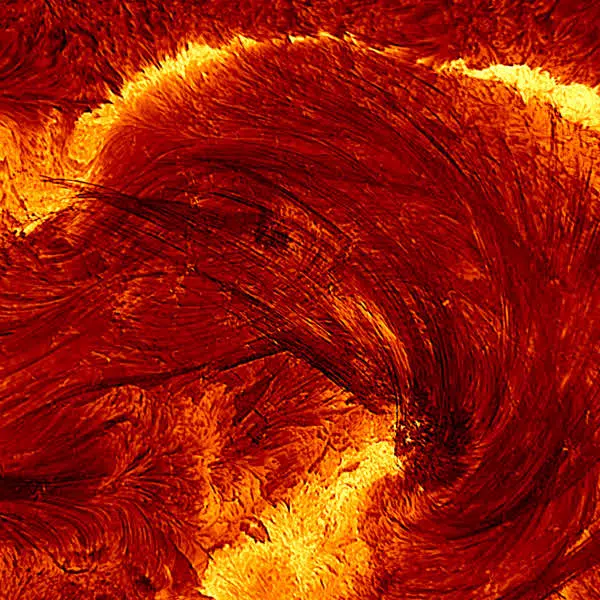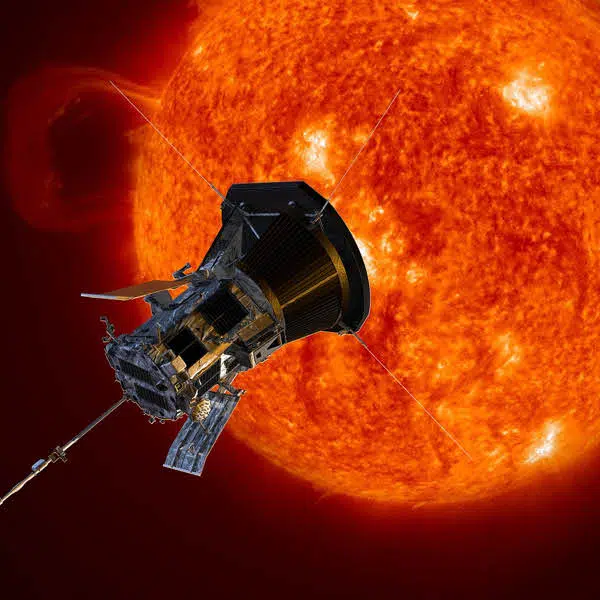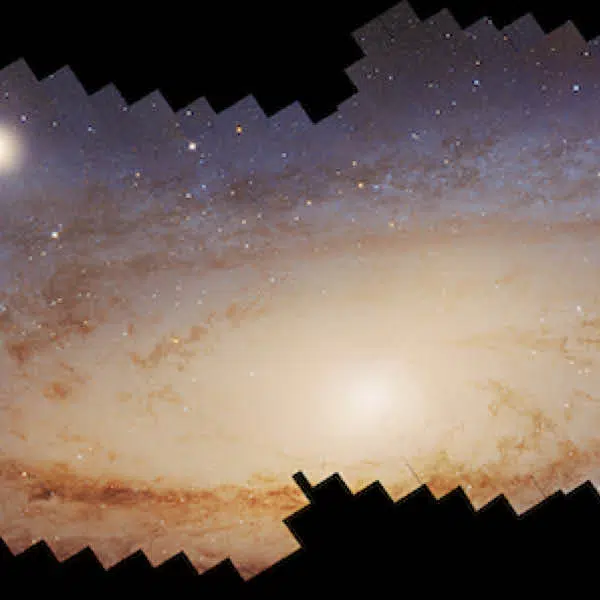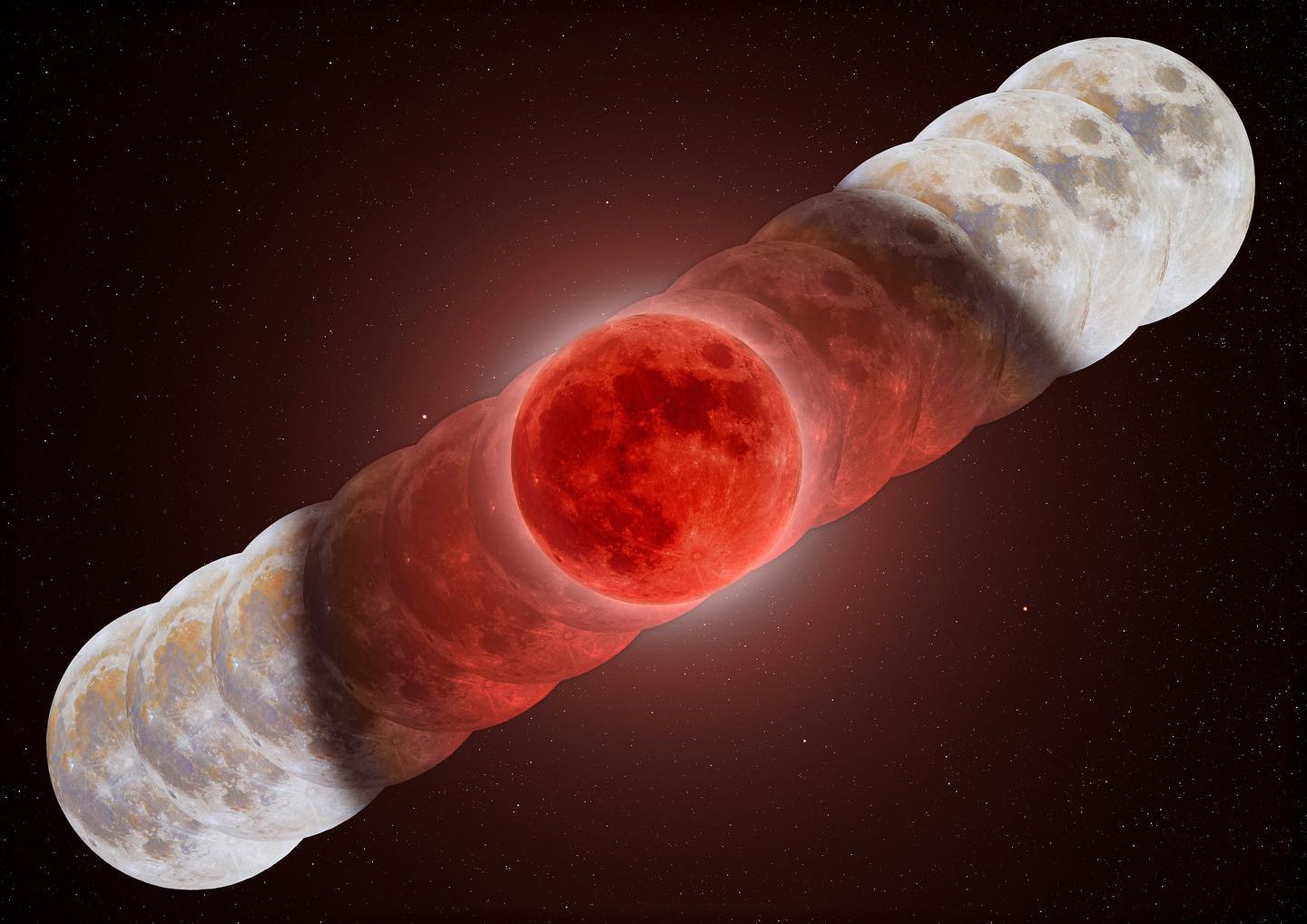
Astrophotographer Andrew McCarthy has us falling in love with our galaxy once again thanks to his incredible composite photo of the recent lunar eclipse. As always, McCarthy's work invites curiosity and asks us to remember just how incredible our universe really is.
Lunar eclipses typically happen just once or twice a year. In 2022, we were lucky enough to see two lunar eclipses—one on May 15 and the other on November 8. The event occurs when the Moon moves into the Earth's shadow. In order for this to happen, the Sun, Earth, and Moon need to be perfectly or very closely aligned. Not only that, but the Earth needs to sit between the Sun and the Moon and it must be a Full Moon.
When everything comes together for a full lunar eclipse, it's magic. As McCarthy's composite image shows, the Moon turns a mottled red-orange when in complete totality. This is because the Moon relies on the reflection of the Sun's rays to shine. With those rays covered up, its characteristic glow is gone. In its place, we see the rusty-colored hue because of indirect sunlight.
While the Earth completely blocks the Sun's rays from the Moon, there is still light that is coming through from behind Earth. This light gets bent and filtered through Earth's atmosphere so that only longer wavelengths of red and orange light reach the Moon. Thanks to a second photo McCarthy published during the lunar eclipse, which he called the most colorful one he's seen, we can really study the incredible effect this coloration has on our perception of the Moon.
“Every lunar eclipse, I hang out with my camera and watch the event with binoculars,” he writes. “Usually the visual experience, while incredible, isn't very colorful. This is because [the] color on dim objects tend[s] to not be easy to discern visually due to [the] limits of our eyes. This eclipse was somehow the exception, burning with a deep red with more saturation visually than past events. Those colors came through as an explosion of color on camera, which developed into this vivid image you see here.”
Both images are available for purchase via McCarthy's website. And you can follow along on Instagram to see more of his astrophotography.
Astrophotographer Andrew McCarthy recently took a photo of what he called the most colorful total lunar eclipse he's ever seen.
